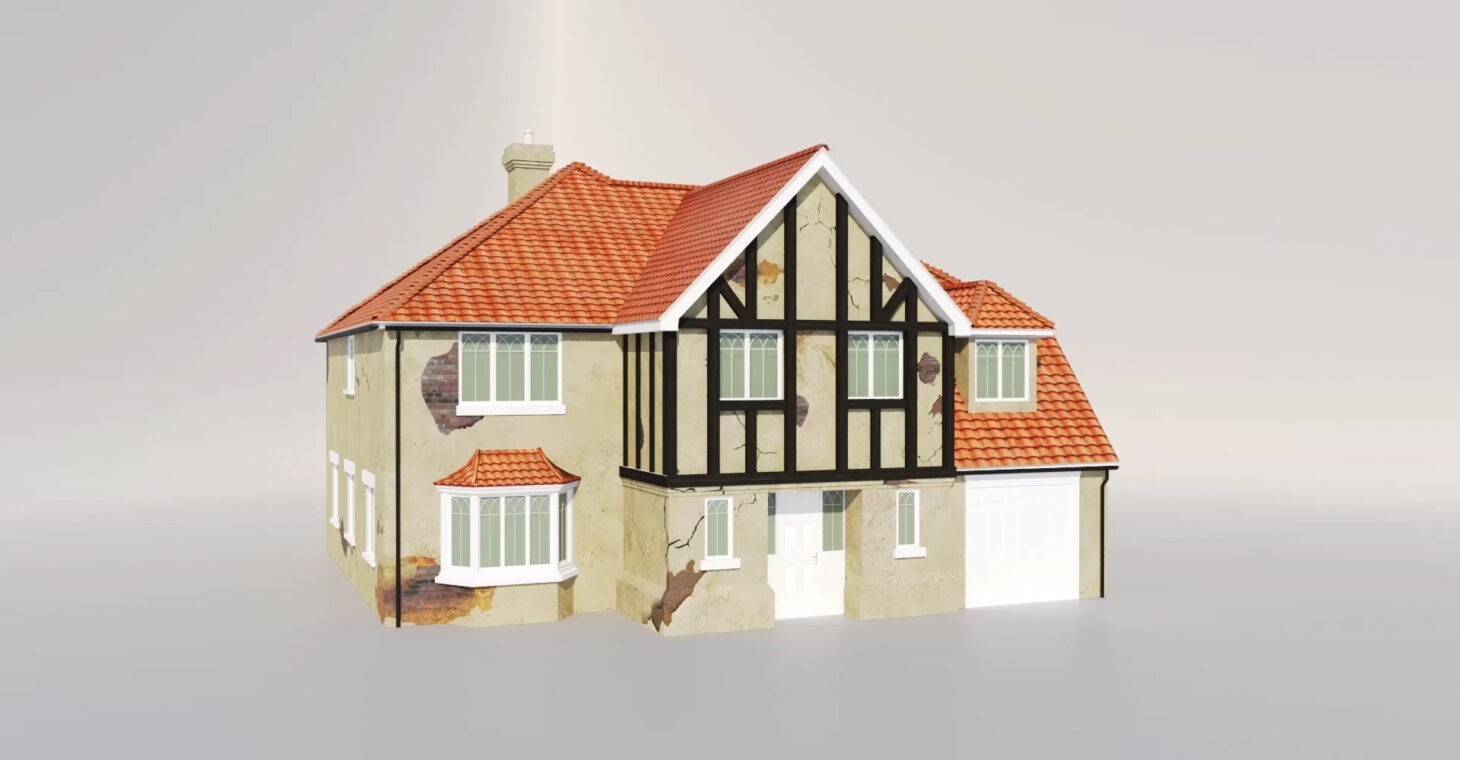The exterior of a structure will eventually come into contact with organic materials and contaminants. The render may get stained or discoloured due to the buildup of carbon pollutants such as carbon monoxide, exhaust fumes, algae, and mould. The extensive staining results in a horrifying look of brown, black, and green stains that is hardly the welcome that any visitor or employee would want to see.
It is preferable to treat the stains as soon as possible. This will not only return the rendering to its previous splendour and stop vandals from attacking what looks to be an unmaintained building, but it will also clean the render of any dangerous materials.
If left untreated, algae and carbon pollution can harm the render permanently. Additionally, the longer the stains are left because the toxins seep deeper into the brickwork, the harder they are to remove.
Potential clients frequently question the Spectrum staff about whether the rendering can be jet-washed. Although it appears to be a simple and affordable solution, it may do more harm than good.
This blog post will go through a few reasons why pressure or jet washing shouldn’t be used to clean render and which alternatives work best.
What might occur if a pressure washer is applied to render:
- The rendering is removed.
- The surface starts to etch
- You can’t get rid of organisms.

The rendered surface is stripped away by pressure washing
A pressure washer is the best option for stone and concrete surfaces, but not for render. Since the pressure is too great for the render, the wall’s surface eventually comes off. The rendered surface will become thinner when even a few millimetres are removed, leading to fractures, crumbling brickwork, and an uneven finish. The harm will necessitate more time and money being spent on the solution.
The rendered surface is etched by pressure jet washing
A fan jet or pencil jet used closely will etch the render while pressure cleaning it. Once the rendering has been engraved, the surface damage will always be visible. After pressure washing, the render might appear a little cleaner, but that improvement won’t remain. The etching will be obvious as the algae regrowth occurs on the surface. This indicates that in addition to the render being damaged, it will also appear patchy and display the lines of the etches. The only way to fix the etched render is to re-render the building, which will be expensive.
The issue is not solved by pressure washing
The same issues are present in coloured renders like Monocouche render, K Rend, and Weber render. They serve as a haven for moss, mould, lichen, and algae growth. These little organisms multiply on the render and not only make the surface look ugly but also harm it. The roots of these microorganisms won’t be destroyed if a homeowner or business pressure washes render. This indicates that the algae, moss, and bacteria will grow again within a few months.
Three reasons why pressure washing a rendered building is never a good idea
If you’re considering employing pressure or jet washing to clean any rendered facade on your building, it’s advised to consider the following.
- By burrowing under the skin and blowing it away from the wall, high pressure can harm the render. Organic matter, atmospheric pollutant deposits, and other filth can be gently removed using steam delivered under low pressure through a specialised system.
- Pressure washing removes the stain and does not address the underlying problem; it does not kill organic spores. Applying a suitable biocide, like those used in soft washing, is necessary to prevent regrowth. The surface to be cleaned must first be sprayed with this, and then it must be scrubbed with a brush and given time to work before being rinsed away.
- Jet Washing may leave the wall with a spotty or striped appearance, provided you don’t harm the render’s surface.
What is the remedy for soiled render?
The proper cleaning techniques won’t harm the surface, and the render will remain cleaner for much longer. The building will stay cleaner for longer if the underlying issue is resolved and the bacteria growing on the surface is eliminated. Softwash renders cleaning entails using very little pressure to apply chemicals to the surface.
Utilising telescoping cleaning equipment, this is frequently applied from the floor. At this point, pressure is applied using a method akin to a residential hose pipe. Low-pressure steam is commonly required for stone ledges and places close to the ground where a buildup from splash-up can occur.
The best way to clean rendering is with low-pressure steam, not high-pressure jet washing. This method preserves the rendered surface by delicately eliminating organic waste and impurities while maintaining the surface’s fresh appearance. The building will stay cleaner for a longer period if the bacteria that has been growing on the render is killed.
Without proper advice, cleaning render can result in severe harm. Property managers and building owners must ensure the contractor of their choice is fully knowledgeable about each render’s characteristics to care for it properly.
The confusing discrepancy between the recommendations made by rendering manufacturers makes it much more difficult for property managers and building owners to handle this task themselves. For instance, K-Rend calls for the delicate application of a specifically prepared cleaning solution that efficiently eliminates organic substances to stop their regrowth.
What is the price?
Prices for rendering cleaning will vary depending on factors, including access, location, and algae buildup. It’s crucial to pick a reputable render cleaning firm while deciding how to clean monocouche render or K Rend. Request to see examples of their work and customer reviews. Don’t forget that cheaper is rarely better.
Conclusion
It is advised that professionals use high-temperature, low-pressure equipment and soft-washing chemicals to clean the render. Then, you can take care of any localised stains like iron deposits from signage. Lastly, apply a biocidal treatment to prevent and postpone the recolonisation of biofilm soiling.









